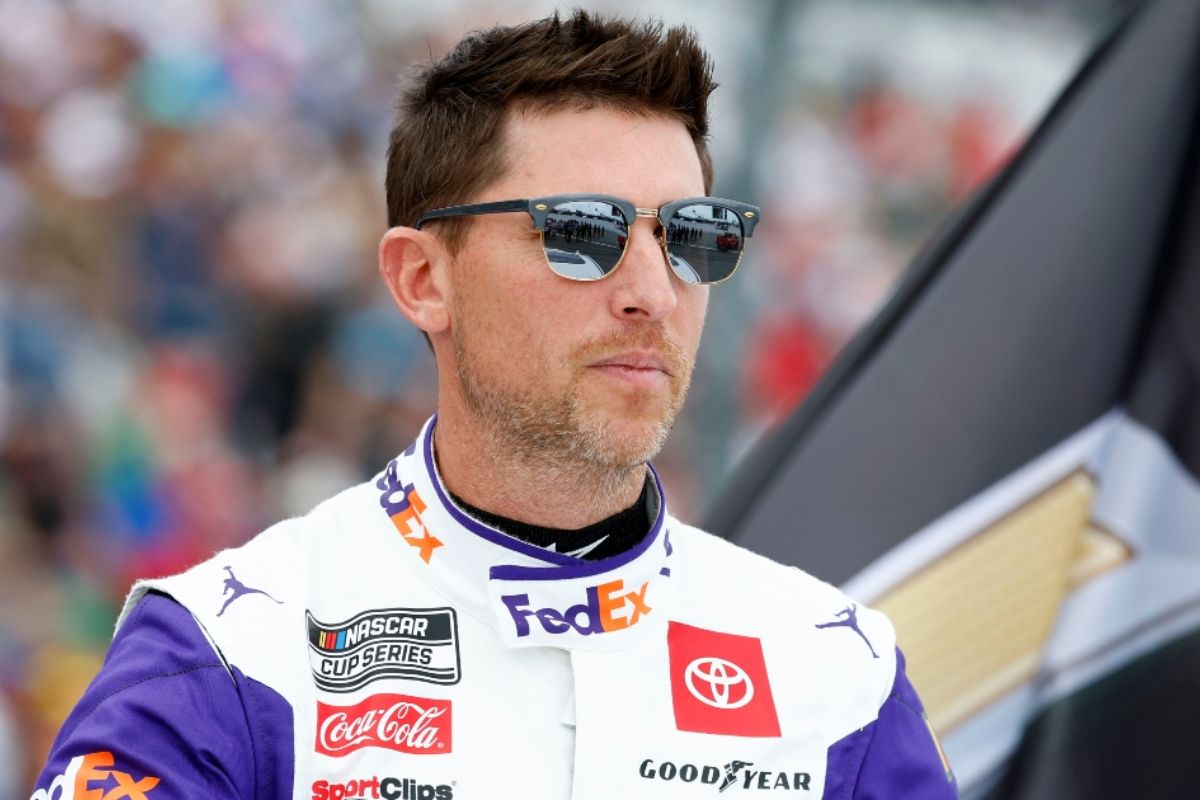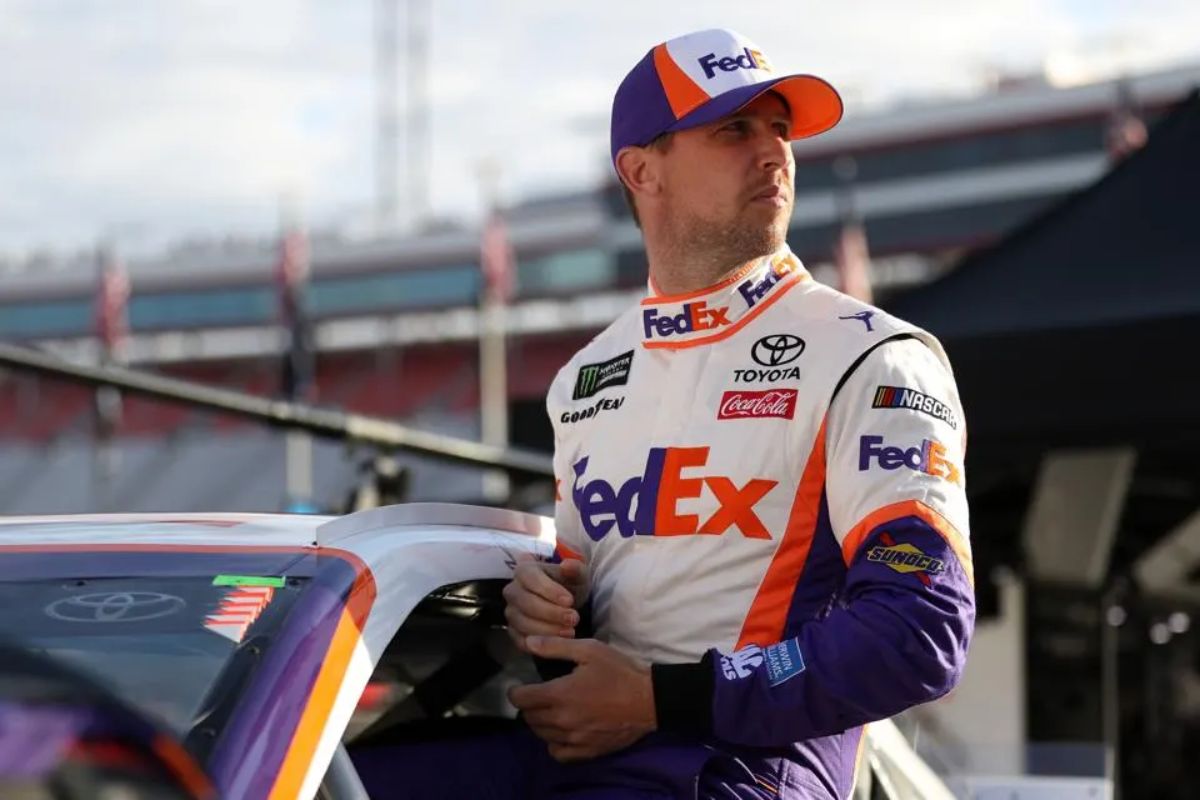Denny Hamlin’s Texas Rant: In a recent, intent critique following a debatable race at Texas Motor Speedway, NASCAR driver Denny Hamlin voiced significant concerns over the track conditions, specifically targeting the management practices of Speedway Motorsports Inc. His comments have led to a broader conversation about the safety of the Next Gen cars and their functionality on single-lane tracks, which SMI oversees. As stakeholders in the racing community contemplate these issues, the outcomes could have far-reaching implications for the future of NASCAR’s track designs and regulations.
Key Takeaways
- Denny Hamlin criticized the Texas Motor Speedway’s track conditions, blaming them for numerous crashes.
- He highlighted safety concerns, urging improvements to enhance driver safety.
- Hamlin’s remarks put Speedway Motorsports Inc., the track owners, under scrutiny for track management.
- He questioned the compatibility of the Next Gen car with the track, noting its challenges on single-lane layouts.
- The race featured excessive cautions, which Hamlin attributed to poor track conditions and car design issues.
Texas Motor Speedway’s Chaotic Race
The race at Texas Motor Speedway was marked by unprecedented chaos, featuring 16 cautions and numerous crashes, including a significant one in the notorious Turn 4. This particular turn has gained infamy over the years for its challenging nature, proving once again to be a changing point in the race’s dynamic.
Analyzing the incidents, a pattern emerges that highlights a combination of high speeds, and aggressive driving. The multiple accidents, especially in Turn 4, suggest that drivers struggled with grip and control, possibly due to the track’s surface characteristics or the tire compounds provided for the race. This turn, with its tight radius and banking, requires precise handling and braking, which, under race conditions, can push the cars beyond their limits.
A closer examination of the vehicles involved shows a mix of seasoned veterans and less experienced drivers, indicating that the issue was not merely about individual skill levels but perhaps more about the interaction between the car setups and the track’s unique demands.
Hamlin’s Post-Race Reaction
Following the chaotic race at Texas Motor Speedway, Denny Hamlin openly criticized the track conditions, despite initially clearing them of any blame for his performance issues. This shift highlights a complex dynamic between the racer’s immediate post-race emotions and his following reflections. Initially, Hamlin attributed the spin solely to his error, a stand that seemed to underscore his accountability as a driver.
This alteration in Hamlin’s perspective might suggest a deeper, more critical analysis undertaken post-race, which is often shaded by the immediate pressures and competition.
Denny Hamlin’s Analysis on the Track’s Condition
In a recent episode of his ‘Actions Detrimental’ podcast, Denny Hamlin thoroughly critiqued the track conditions at Texas Motor Speedway. He highlighting the alarming number of lead changes—23 in total—and the necessity of two overtimes as indicators of the track’s irregular and unpredictable nature. Hamlin detailed specific sections of the track that proved particularly hazardous, attributing some of the race’s tumult to these areas.
“The track was more treacherous, I thought, at the beginning of the race than it was toward the end…in the beginning, we were all running single-file, in the bottom. And if you ran up just a little bit, your car would take off. It definitely was difficult to pass…It was hard to pass because of the stuff on the surface of the track.”-(DENNY)
Hamlin’s analysis pointed to a decline of the track surface, which he said had not been adequately maintained or updated to meet the demands of current race vehicles and racing styles. This contributed to the treacherous driving conditions and the overall unpredictability during the race.
“When they were building the banking and all that, they had tunnels that can cut underneath…So over time, the soil settles underneath the pavement, and that’s when these huge bumps swell. The reason we don’t run up the track at Texas as much is ’cause there’s a giant, giant bump.”-(HAMLIN)
The veteran driver also highlighted the feedback from other drivers, talking about a common sentiment that the track was not only difficult but also potentially unsafe in its current state.
Critique of Track Owners and Next Gen Car
Having outlined the track’s problematic conditions, Denny Hamlin then shifted his critique towards the track owners and the challenges posed by the Next Gen car. He particularly highlighted his concerns with the PJ1 compound, a track treatment designed to enhance grip but which, according to him, complicates racing dynamics at Texas Motor Speedway.
Hamlin points out that the underlying issue of soil settling beneath the pavement, exacerbated by structural features such as tunnels, has led to significant track deformations, including severe bumps. These bumps, he argues, are a primary reason why drivers avoid certain lanes, thereby reducing the track’s racing feasibility. His critique implies a lack of foresight or inadequate response from SMI in addressing these foundational issues which compromise the track’s integrity and safety.
While he does not explore deeply into the technical compatibilities in this particular critique, it is clear that Hamlin sees a mismatch between the track’s current state, influenced heavily by SMI’s decisions, and the best performance conditions for Next Gen cars.
Next Gen Car’s Compatibility with Single-Lane Tracks
The Next Gen car frequently struggles on single-lane tracks, as evidenced by the challenges drivers face with maneuverability and passing, particularly noted at venues like the Texas Motor Speedway. Since its introduction in 2022, the Next Gen car has notably altered the dynamics of NASCAR racing. The design and engineering of the vehicle, while innovative, present specific difficulties on tracks where passing options are inherently limited by the track layout.
Jimmie Johnson, a seasoned driver, has remarked on the Next Gen car’s inability to effectively ‘slip and slide’ around off the right rear, a move vital in overtaking opponents on single-lane circuits.
“We’ve said a million times this Next Gen car does not run well on single-lane tracks. It needs two and three lanes to run well, which is why we’re so good on mile-and-a-halfs. Short tracks suck because most of them are single-lane. Mile-and-a-halfs are good because we can get away from each other…But Texas is a huge mile-and-a-half with a very narrow racing surface, with the stuff that’s been put on and the big bumps on turns 3 and 4.”-(HAMLIN)
News in Brief: Denny Hamlin’s Texas Rant
Denny Hamlin’s criticism of Texas Motor Speedway and Speedway Motorsports Inc. highlights a significant discrepancy between driver safety and track design.
The incident emphasizes the pressing need for a reassessment of track standards to meet the requirements of modern NASCAR vehicles, especially the Next Gen car.
A cooperative approach involving drivers, track owners, and regulatory bodies is crucial to guarantee that the evolution of race tracks aligns with safety advancements and competitive integrity in the sport.
Our Reader’s Queries
Q. Who is the owner of Denny Hamlin’s car?
A. 23XI Racing, pronounced “twenty-three eleven,” stands as an American professional auto racing outfit vying in the NASCAR Cup Series. The organization finds ownership and operation under the leadership of Hall of Fame basketball icon Michael Jordan, alongside three-time Daytona 500 champion and current Joe Gibbs Racing driver Denny Hamlin.
Q. How rich is Hamlin?
A. According to Celebrity Net Worth, Denny Hamlin’s net worth is estimated at $65 million. This figure encompasses his earnings from races and sponsorships, notably his longstanding partnership with FedEx, as well as affiliations with Coca-Cola and Nike Jordan. Additionally, it likely includes gains from the appreciated value of NASCAR charters.
Q. Does Denny Hamlin have a child?
A. In May 2013, Denny Hamlin and his wife, Jordan Fish, joyously welcomed their first child, Taylor James, followed by the arrival of their second child, Molly Gold, in August 2017. As offspring of a renowned NASCAR driver, Taylor James and Molly Gold Hamlin are assured for a distinctive and vibrant upbringing.
ALSO READ: Denny Hamlin’s Texas Crash: Fan Delight



